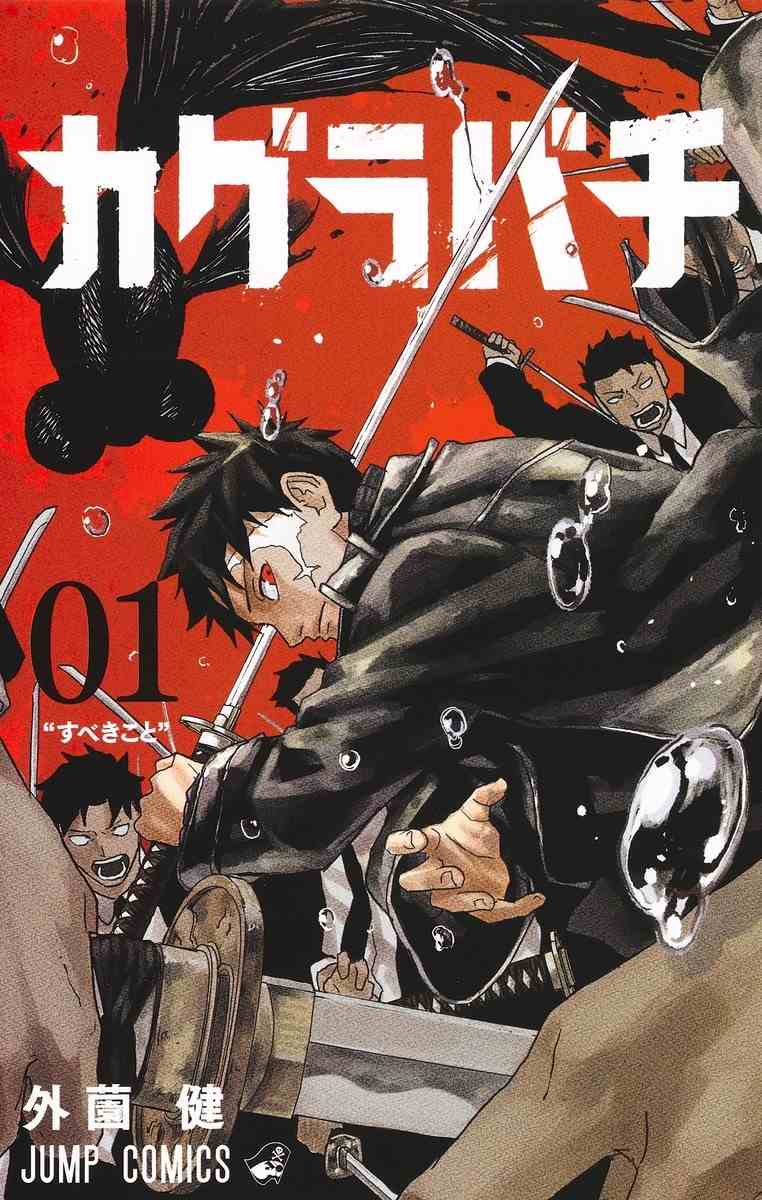- Manga & Anime
- KANTA ON MANGA
‘Kagurabachi’ Manga is Future of Weekly Shonen Jump after Completion of ‘My Hero Academia,’ ‘Jujutsu Kaisen’

The cover of the first volume of “Kagurabachi”
Kagurabachi
by Takeru Hokazono (Shueisha)

12:00 JST, October 18, 2024
Two mega-hits serialized in the manga magazine Shukan Shonen Jump (Weekly Shonen Jump), “My Hero Academia” and “Jujutsu Kaisen,” recently concluded. I have no doubt that the empire of Jump and its mountain of intellectual property won’t be seriously shaken by this. But, at the same time, the circulation of print copies of Weekly Shonen Jump, which peaked at 6.53 million at the end of 1994, is now at the brink of dropping below 1 million. A further decline must be avoided at all costs. “Kagurabachi,” by Takeru Hokazono, which I am introducing this month, is currently attracting the attention of manga readers as a driving force for the next generation of Weekly Shonen Jump.
The story is set in an alternate Japan with a history slightly different from reality. Kunishige Rokuhira is a highly skilled bladesmith with an original technique: hammering special powers into swords. It is said that the six enchanted blades created by Kunishige were instrumental in ending the war 15 years ago.
Kunishige’s only son, Chihiro, admires his father and aspires to become a bladesmith. However, a mysterious group of sorcerers slaughters Kunishige and steals his six enchanted blades. Three years later, Chihiro, now a taciturn young man, sets out as an avenger. Attached to his waist is the seventh enchanted blade, Enten, his father’s final creation before he was murdered.
“Kagurabachi” stands out from other Weekly Shonen Jump manga with its dark worldview. Compare it with, for example, “Kimetsu no Yaiba” (“Demon Slayer”), in which its protagonist Tanjiro slays only demons, while Chihiro’s targets are always humans. They are all scummy villains, so he shows them absolutely no mercy. Right from the start, severed heads and arms go flying and blood splatters wildly. Such scenes make me wonder if they push beyond the realm of “shonen manga” or manga for young boys, even though the panels in the highly contrasting black and white are stylized and beautiful.
It is worth noting that “Kagurabachi,” which began last year, first became popular overseas.
Shueisha Inc., the publisher of Weekly Shonen Jump, started a multilingual manga platform in 2019, and “Kagurabachi,” in spite of being the debut work of a newcomer, catapulted to the No. 1 most viewed work on the platform. This reputation spread to Japan, and in August this year, “Kagurabachi” won first place in the physical manga category of the Tsuginikuru Manga Taisho 2024 (the manga that comes next award 2024).
It is somewhat understandable why “Kagurabachi” has been received favorably abroad. “Kozure Okami” (“Lone Wolf and Cub”) in the 1970s, the origin of “samurai avenger” gekiga, or manga for adults, is said to have influenced even Hollywood. Moreover, the combination of supernatural powers and Japanese swords in “Kagurabachi” is like skimming the cream of “Naruto” and “Demon Slayer,” creating the best of both worlds. That may be why there was a sense of deja vu as I read on. Nevertheless, the fast-paced storytelling and sharpness of the action scenes in “Kagurabachi” show a certain mastery rare for a debut work. The mangaka’s background as an art student makes sense.
The manga has been published in book form in four volumes so far. The artist Hokazono’s confidence seems to be growing, and Chihiro, who used to be an expressionless killing machine, is gradually showing more emotions. There is more diversity in the supporting characters as well, which makes the story more entertaining. At this rate, I expect to see even further growth from “Kagurabachi.”
"Culture" POPULAR ARTICLE
-

Van Cleef & Arpels Dazzles with Art Deco Artisanry at Tokyo Exhibit
-

Disney’s ‘Twisted-Wonderland’ Animated Series Puts Villains in Spotlight: New Show Features School Inspired by Classic Disney Films
-

Ayumi Hamasaki’s Shanghai Concert Canceled Day Before Schedule as Part of Beijing Backlash
-

‘The World Masterpiece Theater Series’ Celebrates 50 Years; Animator Looks Back on Creating Anime Classics
-

Popularity of Piggy Banks Across Time and Place Seen at Bank’s Museum of Money Boxes in Hyogo Pref.
JN ACCESS RANKING
-

Tokyo Economic Security Forum to Hold Inaugural Meeting Amid Tense Global Environment
-

Keidanren Chairman Yoshinobu Tsutsui Visits Kashiwazaki-Kariwa Nuclear Power Plant; Inspects New Emergency Safety System
-

Imports of Rare Earths from China Facing Delays, May Be Caused by Deterioration of Japan-China Relations
-

University of Tokyo Professor Discusses Japanese Economic Security in Interview Ahead of Forum
-

Japan Pulls out of Vietnam Nuclear Project, Complicating Hanoi’s Power Plans



◎上海の日本アニメイベント_20251129YGTGS000921_C-250x168.jpg)


















